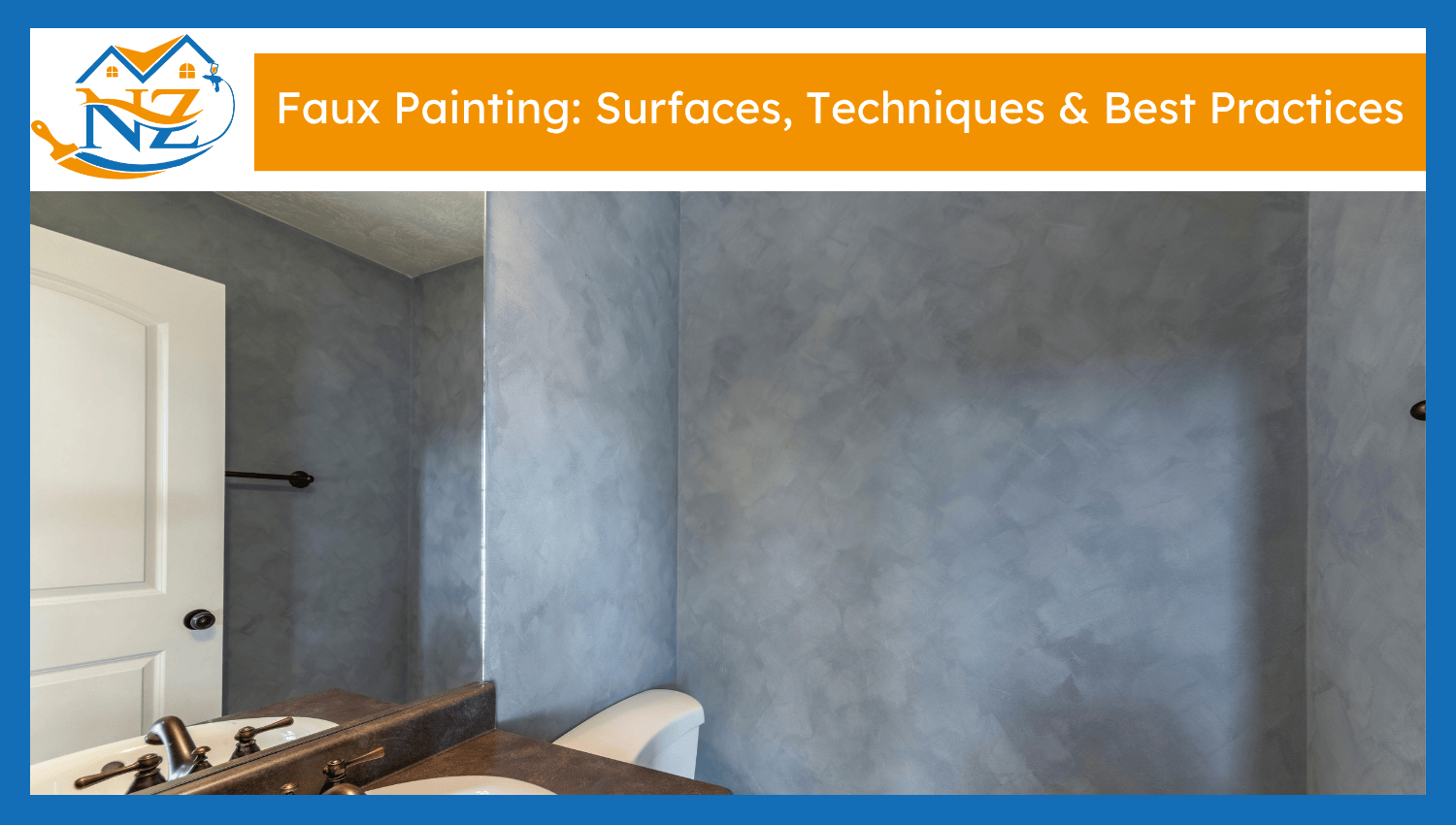

Faux painting is a decorative painting technique that mimics the appearance of another material, such as wood, marble, or stone. Faux is a French word that means false. It creates textured, artistic finishes using paint and glaze. It provides a personalized, expensive appearance at a lower price. It is commonly used in houses, offices, and showrooms to create interior beauty. It adds depth and turns flat surfaces into visually attractive features without using real materials. It creates effects that are fashionable and creative and can fit in different design themes.
Here are the 6 main steps to achieve a clean faux finish:
Make sure all dust, grease, and dirt have been removed from the surface. Fix the cracks or holes with filling and sandpaper the surfaces to create a smooth surface. It is important for the proper sticking of paint and glaze. Skipping it causes poor results. Allow the surface to dry completely before coating it with any base and decorating material.
Choose 2-3 colors to make up contrast and depth. Select a faux technique such as rag rolling, marbling, or sponging, depending on the desired appearance. The best texture is a lighter base with a darker glaze. Test how colors react under different lighting.
Practice the selected faux technique with an extra piece of board or drywall. It reduces mistakes during actual application. It allows adjustments in technique and color balance. Always check the end result in lighting, like the area of application.
Apply an even base coat and leave it to dry completely. Mix the glaze with paint in the right proportion. Apply the glaze over the base using tools such as brushes, rags, or sponges.
Apply patterns with a sponge, rag, plastic bag, or comb while the glaze is still wet. To maintain the glaze workable, apply it in a small area. Repeat the movement evenly to get a smooth texture. Such patterns as swirls, lines, or mottled effects add to the impression of mimicking real materials such as stone, cloth, or wood.
Leave the glaze to dry for 1 hour and at least 24 hours before applying another coat or sealer. It provides good bonding, avoids damage during the curing process, and maximizes the durability of the finish.
Here are the 6 common techniques used to create faux finishes on walls and surfaces:
Sponging involves the application of glaze on top of a base coat with a sea sponge. The uneven sponge surface produces soft layered patterns. You can lightly dab the glaze to give a mottled appearance. It is an easy-to-control technique that adds depth to plain walls without requiring expensive tools.
Rag rolling involves the application of a twisted cloth rolled on the wet glaze. It makes great fabric-like designs with gentle folds and random lines. The effect changes with rag tightness and pressure. It applies best for large areas and provides an antique, luxurious finish that enhances boring walls.
Color washing is applied with a brush and a thin glaze over the dry base coat. The brush strokes remain visible and create a cloudy, layered effect. It softens the wall’s appearance using closely related shades. Color washing enhances depth and warmth in traditional interiors.
Marbling is used to copy the look of real marble. Fine brushes, feathers, or plastic wrap are used for creating veins. It requires precision and layering to achieve realism. It is a perfect method to use on columns, tabletops, or decorative trims that require the appearance of polished stone.
Wood graining is a technique that produces the appearance of wood on a flat surface. Realistic lines and knots are shaped by a graining tool pulled through the colored glaze. Apply over a contrasting base for depth. The technique is used to provide a conventional wood look to non-wood surfaces such as metal or MDF.
Venetian plaster is a fancy finish that is applied in several coats of colored plaster. Each layer is applied and polished with a trowel. The finishing is smooth, lightly textured, and reflective. It looks like polished stone and is applied or elegant, durable walls in luxury interiors.
Here are 6 basic tools and materials used to complete faux painting projects:
Paint glaze is combined with paint to make a transparent layer. It allows you more time to work with the finish and assists in creating texture or patterns. Glaze controls the appearance of the top layer and provides depth to the outcome.
The sea sponges serve the purpose of dabbing glaze on the wall. They have an uneven surface, which forms random, soft patterns. The effect of each sponge is different. They are mostly used in sponging techniques to add texture and depth.
Glaze is rolled or blotted on the wall with rags. They assist in the formation of soft and folded patterns that appear natural. Lint-free or cotton cloths are the best for it. The rag-rolling technique creates a layered warm effect that provides depth to plain walls.
Glaze is applied by brushes in color washing and detailed applications. Base coats are applied over wide areas by rollers. To achieve smoother results, use soft brushes. These two tools are useful in managing the flow of paint or glaze on the surface.
A thick finish, such as Venetian plaster, is applied with trowels and putty knives. They apply layers in smooth and even layers. Such tools are also used in creating textures by pressing or dragging through the glaze or plaster.
Painter’s tape helps to ensure that edges remain clean and neat. Drop cloths help to cover the floors and furniture against spills. Both products are useful in making painting neat and secure. These are used to save time on cleanup and avoid damage.